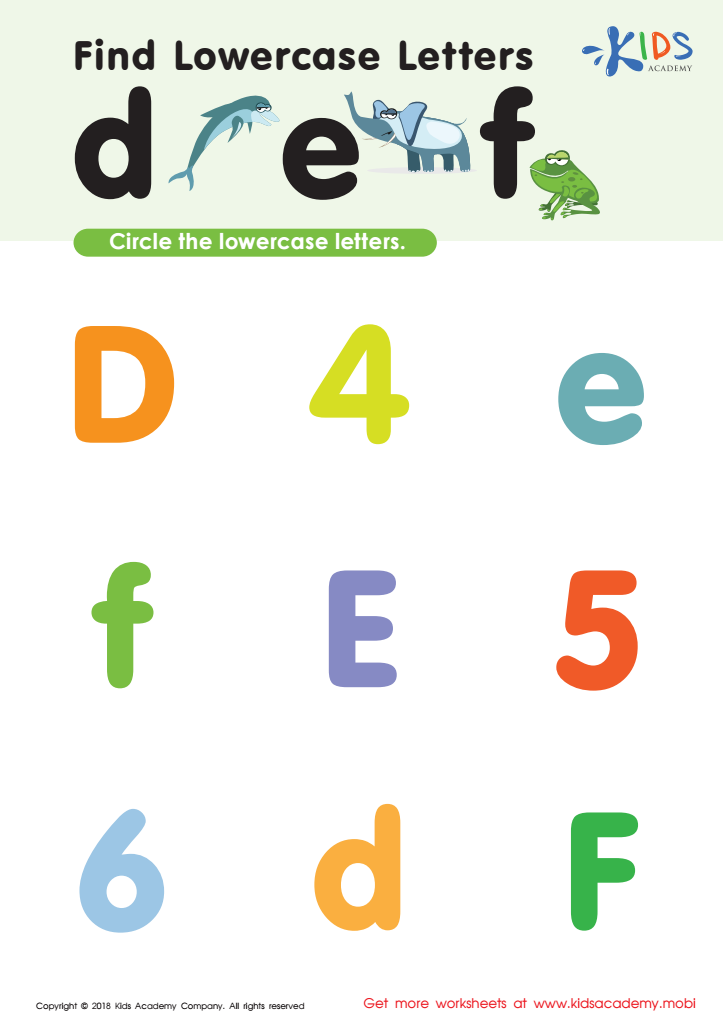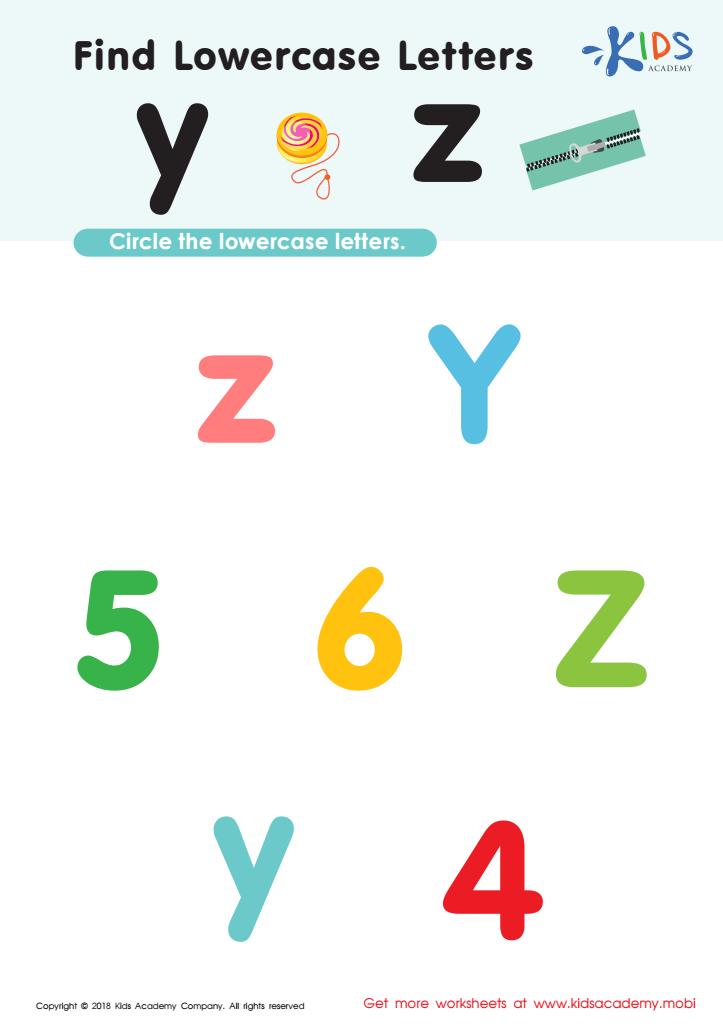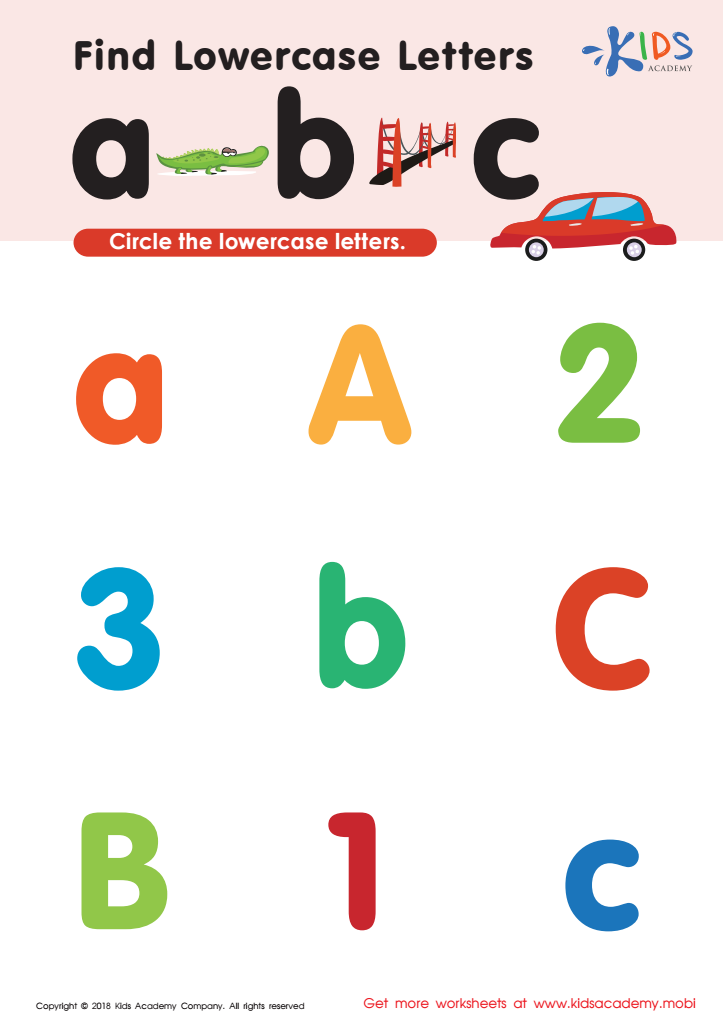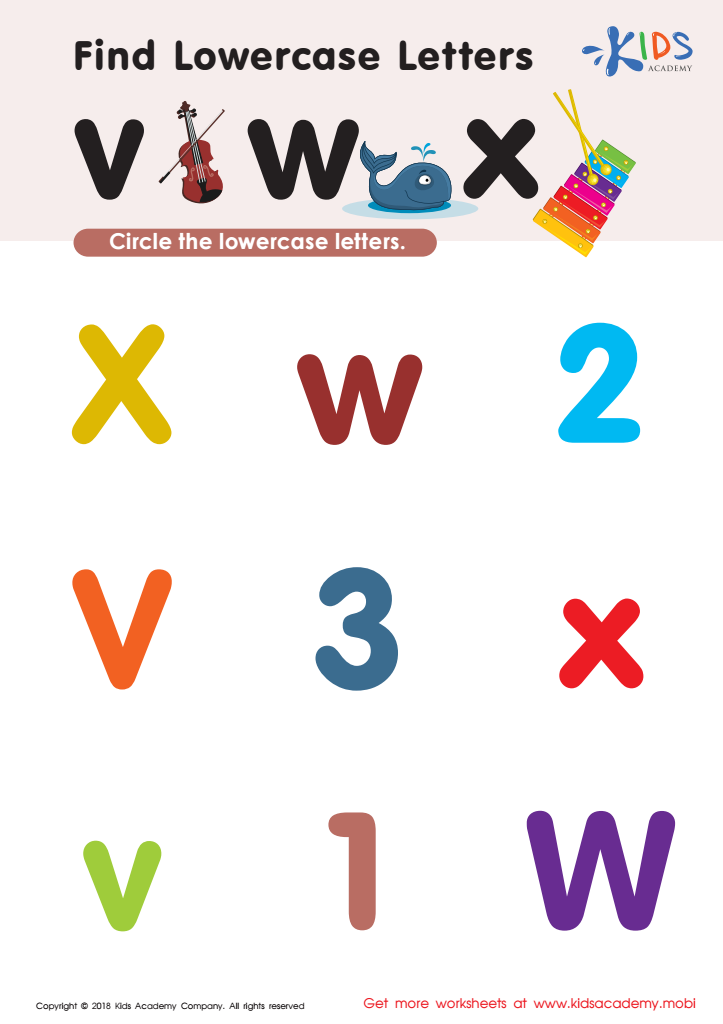Lowercase identification Normal Letter Recognition Worksheets for Ages 3-4
4 filtered results
-
From - To
Welcome to our Lowercase Identification Normal Letter Recognition Worksheets for ages 3-4! Designed for early learners, these fun and engaging worksheets make it easy for young children to recognize and identify lowercase letters. Each activity is tailored to enhance letter familiarity through playful illustrations and simple exercises. Perfect for home or classroom use, our worksheets encourage children to develop foundational reading skills by reinforcing their understanding of the alphabet. Dive into a world of learning with exercises crafted to spark curiosity and build confidence in your child's literacy journey. Start their adventure today with these invaluable educational resources!


Find Lowercase Letters d e f Worksheet


Find Lowercase Letters y z Worksheet


Find lowercase letters a b c Worksheet


Find Lowercase Letters v w x Worksheet
Lowercase identification and normal letter recognition are fundamental skills for children aged 3-4, essential in laying a solid foundation for literacy development. Recognizing lowercase letters is crucial because most written language utilizes lowercase forms, especially in everyday contexts like children's books, signs, and their names. By helping children identify and differentiate these letters early on, teachers and parents can enhance reading readiness and encourage a love for reading.
At this developmental stage, children are naturally curious and eager to learn. Recognizing letters fosters their cognitive skills, improves phonemic awareness, and aids in language acquisition. Engaging in activities that promote lowercase letter recognition—such as games, songs, and interactive reading—can also strengthen fine motor skills during writing practice.
Additionally, mastery of lower case letters sets the stage for future skills, such as spelling and reading fluency. When children feel confident in their letter recognition abilities, they are more likely to participate actively in learning environments and develop positive self-esteem. Therefore, investing time and effort in lowercase identification is a proactive strategy that encourages educational success and instills a lifelong love of learning in young children.
 Assign to My Students
Assign to My Students





















